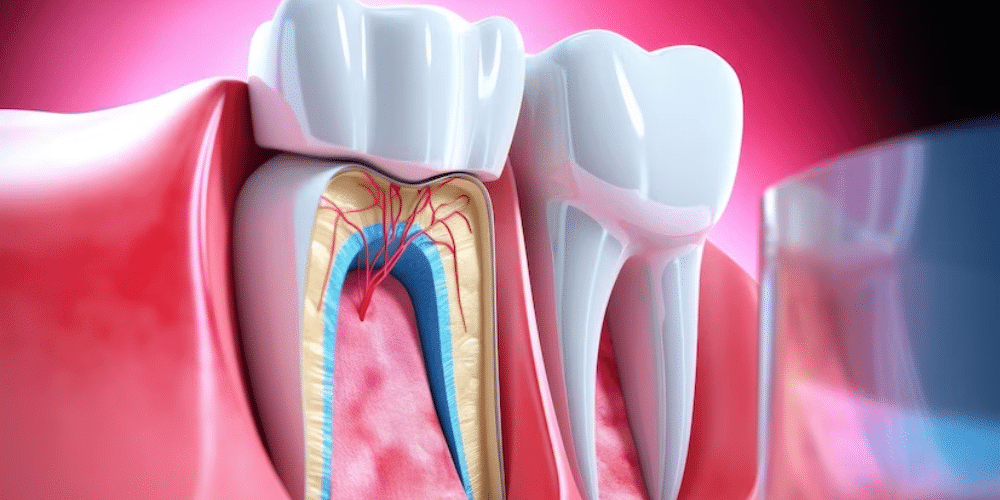A smile speaks volumes, but what if it conceals an underlying dental woe? Root canal infections are silent troublemakers that often go unnoticed until it’s too late. In this comprehensive guide, we’ll unravel the mysteries behind three common signs of root canal infection that you should never ignore. Your dental health deserves attention, and recognizing these symptoms could be the key to saving your smile.
Understanding Root Canal Infections
Before we delve into the signs, let’s understand what a root canal infection entails. The root canal is the innermost part of your tooth, housing sensitive nerves and tissues. When bacteria invade this space, it can lead to an infection, causing discomfort and potential damage if left untreated. Now, let’s shine a light on the three common signs you should be vigilant about.
The Warning Signs of Root Canal
Lingering Toothache
A persistent toothache is your body’s way of signaling distress. While occasional discomfort is normal, a lingering or intensifying pain could be a red flag. The infection in the root canal triggers inflammation, putting pressure on surrounding nerves. This often results in a throbbing or constant ache that can radiate to the jaw or ear. Ignoring this pain may lead to further complications, so prompt attention is crucial.
Sensitivity to Hot or Cold
Have you noticed a sudden sensitivity to hot or cold foods and beverages? This could be another indication of a root canal infection. The compromised inner structure of the tooth makes it more susceptible to temperature changes. If sipping hot coffee or biting into ice cream sends a sharp pain through your tooth, it’s time to consult your dentist. Early intervention can prevent the infection from spreading and causing more extensive damage.
Swollen Gums and Facial Tenderness
Swollen gums and facial tenderness are often overlooked signs of a root canal infection. As the infection progresses, it can extend beyond the tooth. It eventually results in affecting the surrounding gums and tissues. You might notice swelling, redness, or tenderness in the affected area. In some cases, a pimple-like bump, known as a dental abscess, may develop on the gums. Addressing these symptoms promptly is crucial to prevent the infection from spreading to other parts of the mouth.
The Root Canal Treatment Process
Root canal treatment often feared but widely misunderstood, is a dental procedure. It’s designed to salvage a tooth that’s been compromised by infection or damage to its innermost part—the pulp or nerve. Contrary to popular belief, this procedure is not a source of pain but a remedy for it. Let’s break down the root canal treatment process into simple steps:
Diagnosis
It all begins with a dental visit prompted by symptoms like persistent toothache, sensitivity, or swelling. The dentist examines the tooth and may take X-rays to confirm the presence and extent of the infection. Based on this assessment, a decision is made on whether a root canal is necessary.
Local Anesthesia
Before diving into the procedure, the dentist administers local anesthesia to ensure you’re comfortable and pain-free throughout the process. This step is crucial in dispelling the common myth that root canals are excruciating.
Access Opening
Once the tooth is numb, the dentist creates a small access opening in the crown, the top part of the tooth. This opening allows access to the infected pulp chamber and root canals.
Removal of Infected Tissue
Using specialized tools, the dentist carefully removes the infected or damaged pulp tissue from the pulp chamber and root canals. This step is vital to eliminate the source of infection.
Cleaning and Shaping
The interior of the tooth is thoroughly cleaned to remove any remaining debris and bacteria. The dentist then shapes the root canals to prepare them for the filling material.
Restoration
In the final step, the tooth is restored to its full functionality and appearance. This may involve placing a permanent crown, especially if the tooth has suffered significant damage.
Post-Treatment Care
Following the procedure, it’s essential to follow the dentist’s post-treatment care instructions. This often includes practicing good oral hygiene, attending follow-up appointments, and being mindful of any unusual symptoms.
Your dental health is a crucial aspect of your overall well-being. Recognizing the signs of a root canal infection and seeking timely intervention can make a significant difference in preserving your smile. Don’t let subtle discomfort turn into a major dental issue. If you experience persistent toothache, sensitivity, or swelling, consult your dentist without delay. Remember, a proactive approach to dental care is the key to maintaining a healthy and radiant smile.
Root Canal FAQs
Q: What happens after a root canal?
A: After the root canal is completed, a dental crown is often placed on the treated tooth to restore its strength and functionality. Patients may experience some mild discomfort for a few days, which can usually be managed with over-the-counter pain medication.
Q: Can I drive home after a root canal?
A: In most cases, patients can drive themselves home after a root canal. However, if sedation was used during the procedure, it’s advisable to have someone accompany you or arrange for alternative transportation.
Q: How can I prevent the need for a root canal?
A: Maintaining good oral hygiene practices, such as regular brushing, flossing, and dental check-ups, can help prevent the development of cavities and reduce the risk of needing a root canal. Early intervention for dental issues is also key in preventing complications that may lead to root canal treatment.
Q: Is a root canal a painful procedure?
A: Modern root canal procedures are performed under local anesthesia, ensuring that the patient experiences minimal discomfort during the treatment. Advances in dental technology have made root canals much less painful than they were in the past.




